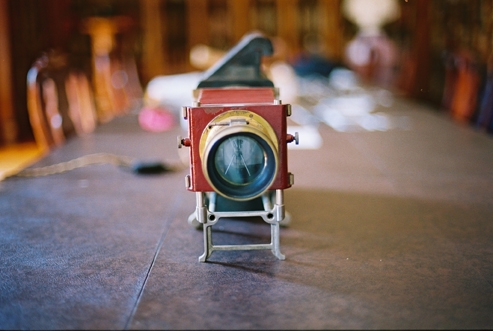
Before there was Powerpoint and data projectors, before even 35mm Kodak slides (which now too have fallen into disuse), there were "magic lantern slides." With the advent of photography, better optics, and the electric light, by the late 1800s, lantern slides were cutting edge media--projecting an image large enough a whole classroom (if not auditorium) could see. McGill University has put together an excellent site, including two slide shows in the original format they would have been delivered in at the turn of the century.
The slides are constructed from a base piece of glass, with the emulsion (photo) on it, then a matte over that, and then a top piece of cover glass. They are then taped all the way around to keep the pieces together and to keep dust out. Sometimes, color has been added by hand, tinting the images (since they are all from far before the invention of the color film). Of the slides from the Classics Department, the adhesive of the tape has dried out on a good number (and the paper tape turned brittle)--leaving sharp edges, places for dust to get in, and sometime leaving the entire slide falling apart. Since the slides are made of glass, they are fairly fragile and a good number of them have cracks--sometimes leaving bits of broken glass in the boxes. Finally, many show varying degrees of damage to the emulsion (such as this Damaged slide of unknown location)--be it oxidation or perhaps mold.
To get the feeling of what a slide show would have felt like, we tried projecting some of the slides.
